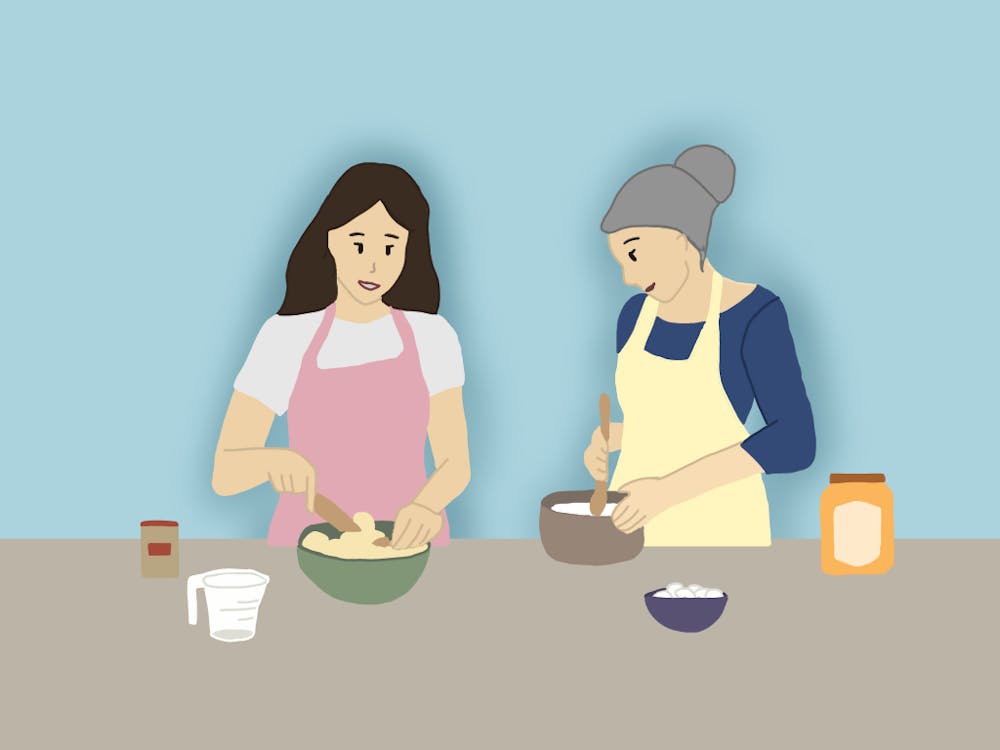Lively music and cheers echoed through Peabody Lawn Saturday afternoon as the University Programs Council introduced the first performers of the 37th annual Culture Fest, an event where cultural organizations take to the stage to celebrate diversity in the University’s student body.
From 12 p.m. to 5 p.m., 26 CIOs put on dances, fashion shows and musical performances. They also hosted booths where audience members could learn the history of cultures and engage in artistic practices.
“Culture Fest is a way for students of every cultural background to unite and present something to the University that's unique,” Mariam Leila, the UPC Cultural Connections director and fourth-year College student said. “[Since] it's happening on Family Weekend, people who are not part of U.Va. can come up to us and see all the different, beautiful cultures that we have here.”
This year, Culture Fest was relocated from its usual place at the McIntire Amphitheater — which is currently under construction — to Peabody Lawn. Equipped with a stage deck and sound system, UPC spotlighted CIOs such as Afghan Student Association, Virginia Di Shaan, University Salsa Club, K-Edge Dance Crew, Arab Student Organization and V Major Chinese Arts Performing Troupe.
Upon entering Peabody Lawn, attendees could fall in line for food catered by Got Dumplings, Milan Indian Cuisine and Pineapples Thai Kitchen or use a voucher to order food from the Little Manila food truck. Attendees were given a free T-shirt from UPC and, if they visited at least three CIOs’ booths and received a stamp from each one, a Culture Fest tote bag. Activities at the booths included Taiwanese calligraphy, Mehndi hand art and Japanese origami.
Some attendees were familiar with the cultures presented Saturday but had not experienced the cultural practices and dances until Culture Fest. First-year College student Eugene Kim came to watch his friends perform for the Korean Student Association but gained a more holistic understanding of new cultures as well.
“I was exposed to different cultures throughout this semester when joining different clubs around the beginning of the year, but it's kind of a very surface level way of learning another culture,” Kim said. “I feel like music…and dancing is a very effective way of spreading your culture.”
According to Leila, one of the purposes of Culture Fest is not only to present people with a variety of cultures but to engage them in each culture’s practices.
“Hands-on experience is, I think, one of the best ways of getting a really good idea of what the culture is,” Leila said.
Many performances encouraged audience participation. Eric Yeatts, second-year College student and co-culture chair of Organization of Young Filipino Americans, said he wanted to establish closeness with the crowd during OYFA’s performance. In one traditional Filipino dance called Pukol, students clicked coconut shells together, inviting audience members to clap along.
“I hope people understand that Culture Fest is not just watching the dances,” Yeatts said. “I want the crowd to experience our culture and be a part of our dances…We're all family, especially with the audience.”
Besides immersing attendees in the moment, student performers also sought to honor their cultures’ history. For Sarai Villagomez-Romo, president of Fuego Dance Team and third-year College student, dancing at Culture Fest allowed her and other Fuego members to preserve Latin culture.
“One of the purposes of Fuego is to pay homage to our ancestors,” Villagomez-Romo said. “We do these dances to keep them alive. Especially at a [primarily white institution], where there isn't much space to showcase our culture, when we are given that opportunity, we want to really show it.”
By performing traditional dances from a variety of Latin American countries, Fuego hoped its audience would realize the complexity of Latin culture.
“There's this idea that Latin America is just this one big homogenous culture, which is not at all true,” Villagomez-Romo said. “There are so many different countries with so many different traditions and cultures, and that includes millions and millions of different dance styles.”
According to Leila, one of the goals of UPC is to bring smaller organizations like Fuego into the limelight for future Culture Fests. UPC anticipates a growth in the number of CIOs participating in the festival.
“I would love to see organizations, like smaller ones that we don't really know or that haven't really participated in Culture Fest, to participate and showcase their culture,” Leila said.
Villagomez-Romo hopes that by helping Fuego gain visibility on Grounds, Culture Fest will pave the way for larger performances in the future, such as Lighting of the Lawn.
“Culture Fest lets us get a little snippet of that,” Villagomez-Romo said. “It opens up doors for us since not a lot of people get to see performances that are cultural.”
Culture Fest is an annual University tradition that enables students from all backgrounds to not only celebrate their heritage but also inform others about traditions and cultures that may not be visible in everyday life.
“You get to see the cultural richness that you might not usually see when you walk around Grounds,” Villagomez-Romo said. “Like at U.Va., you might ask, ‘Where's the culture, guys?’ Then like, you come across Culture Fest, and there it is.”







